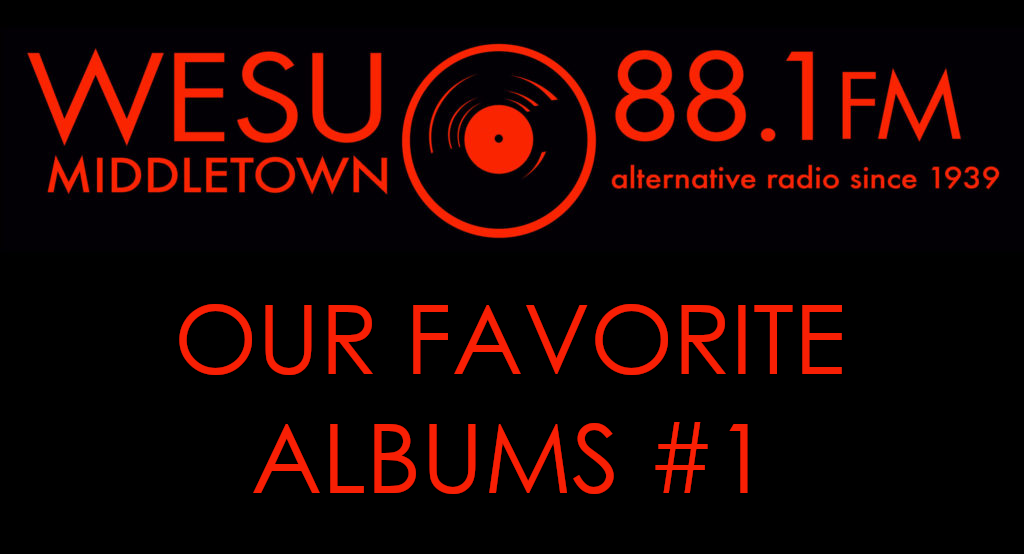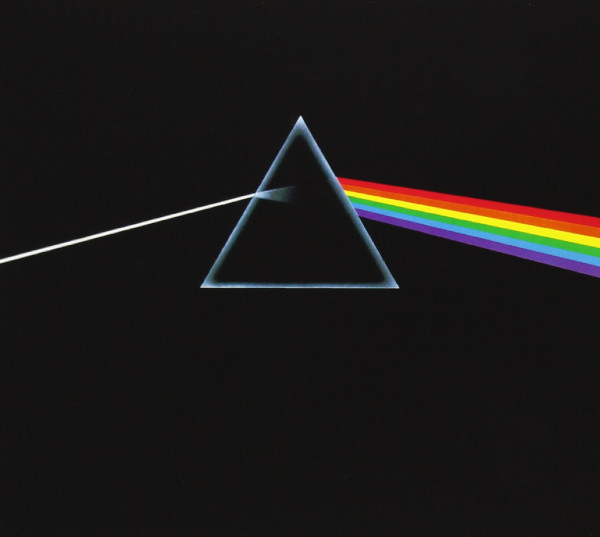Our Favorite Albums #1

1. Pink Floyd – The Dark Side of the Moon [1973]

Nominated by Psychedelic Rick of The Psychedelicatessen, Andy Chatfield of Center for the Arts Radio Hour, DJ McKenzie of Splitting Hairs & The Beatles: A Week in the Life, DJ Deni of Lovin’ the 70’s, and Leith of The Light Fandango.
DJ McKenzie says : Exactly what an album should be: a cohesive unit, all working together to convey a larger meaning. No track takes precedence over another (except for maybe “Money”). They all shine.
Following Meddle in 1971, Pink Floyd assembled for a tour of Britain, Japan and the United States in December of that year. In a band meeting at drummer Nick Mason’s home in Camden, bassist Roger Waters proposed that a new album could form part of the tour. Waters’ idea was for an album that dealt with things that “make people mad”, focusing on the pressures faced by the band during their arduous lifestyle, and dealing with the apparent mental problems suffered by former band member Syd Barrett. In an interview for Rolling Stone, guitarist David Gilmour said: “I think we all thought – and Roger definitely thought – that a lot of the lyrics that we had been using were a little too indirect. There was definitely a feeling that the words were going to be very clear and specific.”
Dark Side of the Moon: A Piece for Assorted Lunatics, as it was then known, was performed in the presence of an assembled press on 17 February 1972 – more than a year before its release – at the Rainbow Theatre, and was critically acclaimed. Michael Wale of The Times described the piece as “bringing tears to the eyes. It was so completely understanding and musically questioning.” Derek Jewell of The Sunday Times wrote “The ambition of the Floyd’s artistic intention is now vast.”
The album features metronomic sound effects during “Speak to Me”, and tape loops opening “Money”. Mason created a rough version of “Speak to Me” at his home, before completing it in the studio. The track serves as an overture and contains cross-fades of elements from other pieces on the album. A piano chord, replayed backwards, serves to augment the build-up of effects, which are immediately followed by the opening of “Breathe”. Mason received a rare solo composing credit for “Speak to Me”.
The sound effects on “Money” were created by splicing together Waters’ recordings of clinking coins, tearing paper, a ringing cash register, and a clicking adding machine, which were used to create a 7-beat effects loop (later adapted to four tracks to create a “walk around the room” effect in quadraphonic presentations of the album). At times the degree of sonic experimentation on the album required the engineers and band to operate the mixing console’s faders simultaneously, to mix down the intricately assembled multitrack recordings of several of the songs (particularly “On the Run”).
Along with the conventional rock band instrumentation, Pink Floyd added prominent synthesisers to their sound. For example, the band experimented with an EMS VCS 3 on “Brain Damage” and “Any Colour You Like”, and a Synthi A on “Time” and “On the Run”. They also devised and recorded unconventional sounds, such as an assistant engineer running around the studio’s echo chamber (during “On the Run”),[38] and a specially treated bass drum made to simulate a human heartbeat (during “Speak to Me”, “On the Run”, “Time” and “Eclipse”). This heartbeat is most prominent as the intro and the outro to the album, but it can also be heard sporadically on “Time” and “On the Run”. “Time” features assorted clocks ticking, then chiming simultaneously at the start of the song, accompanied by a series of Rototoms. The recordings were initially created as a quadraphonic test by [Alan] Parsons. The songs of our favorite album were performed a year before its release, prompting one critic to describe the music as “bringing tears to the eyes. It was so completely understanding and musically questioning.”, who recorded each timepiece at an antique clock shop. Although these recordings had not been created specifically for the album, elements of this material were eventually used in the track. (wikipedia.org)